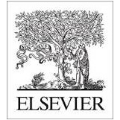Unmanned aerial vehicles (UAVs) with integrated sensing, computation, and communication (ISCC) capabilities have become key enablers of next-generation wireless networks. Federated edge learning (FEL) leverages UAVs as mobile learning agents to collect data, perform local model updates, and contribute to global model aggregation. However, existing UAV-assisted FEL systems face critical challenges, including excessive computational demands, privacy risks, and inefficient communication, primarily due to the requirement for full-model training on resource-constrained UAVs. To deal with aforementioned challenges, we propose Split Federated Learning for UAV-Enabled ISCC (SFLSCC), a novel framework that integrates split federated learning (SFL) into UAV-assisted FEL. SFLSCC optimally partitions model training between UAVs and edge servers, significantly reducing UAVs' computational burden while preserving data privacy. We conduct a theoretical analysis of UAV deployment, split point selection, data sensing volume, and client-side aggregation frequency, deriving closed-form upper bounds for the convergence gap. Based on these insights, we conceive a joint optimization problem to minimize the energy consumption required to achieve a target model accuracy. Given the non-convex nature of the problem, we develop a low-complexity algorithm to efficiently determine UAV deployment, split point selection, and communication frequency. Extensive simulations on a target motion recognition task validate the effectiveness of SFLSCC, demonstrating superior convergence performance and energy efficiency compared to baseline methods.
翻译:暂无翻译




